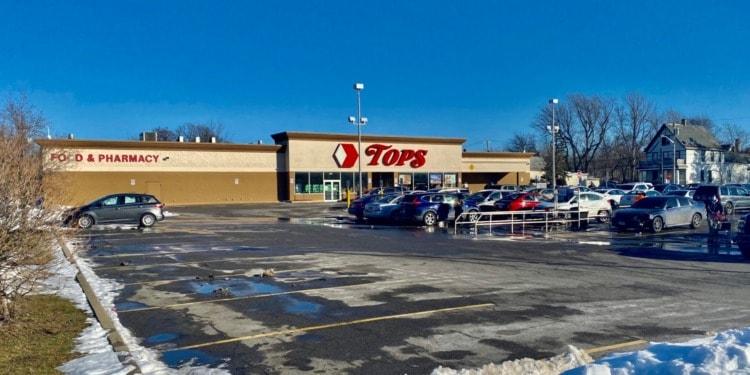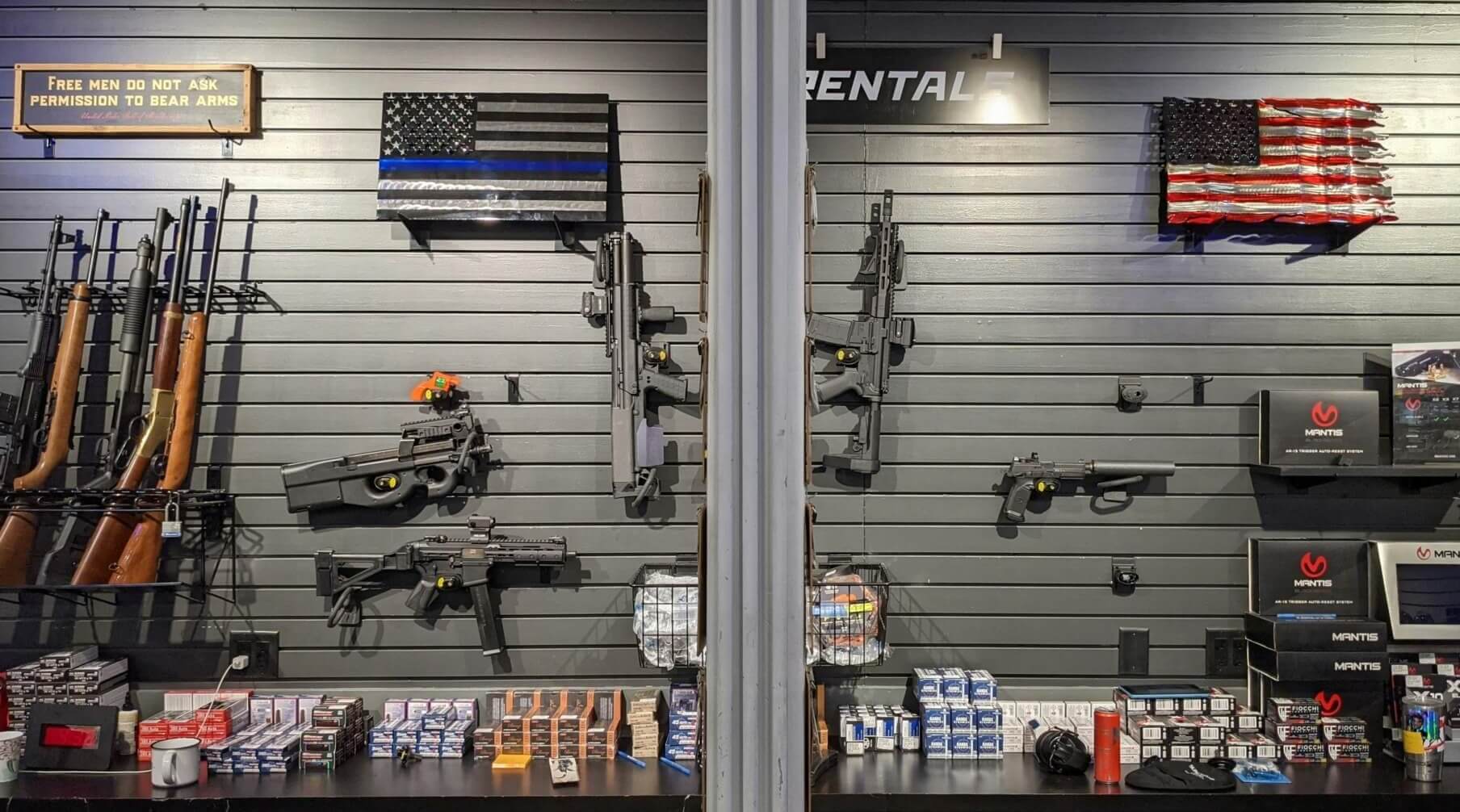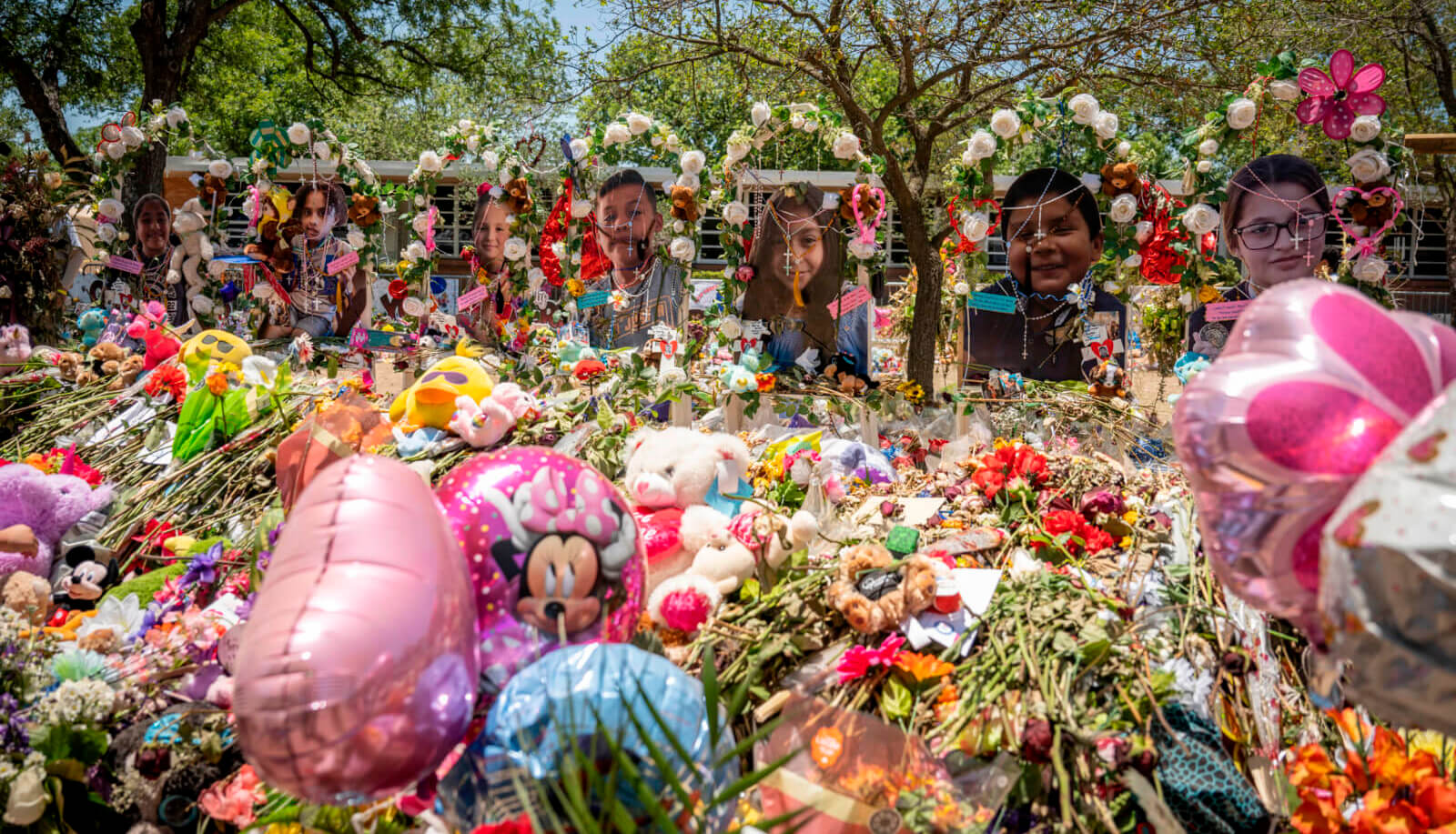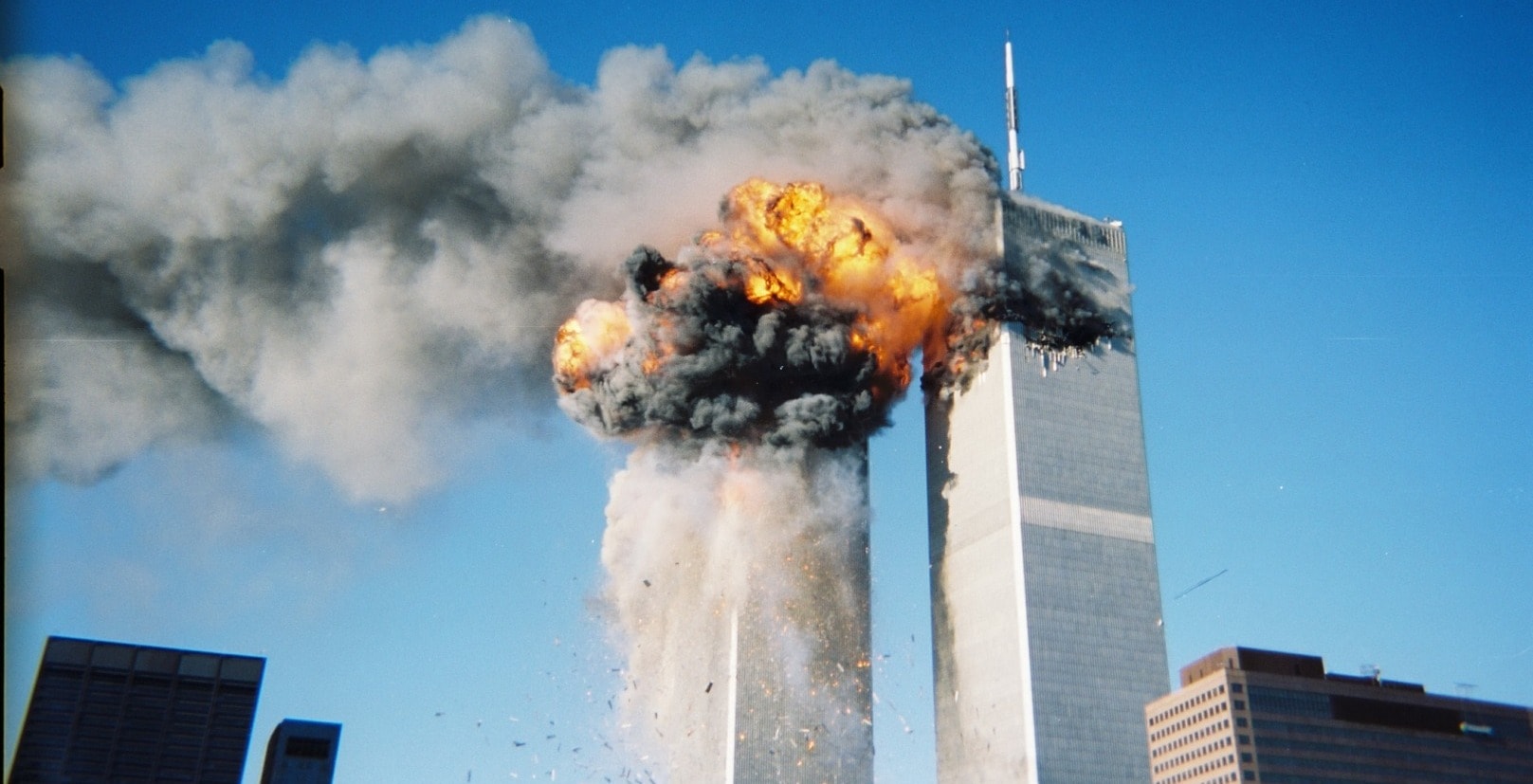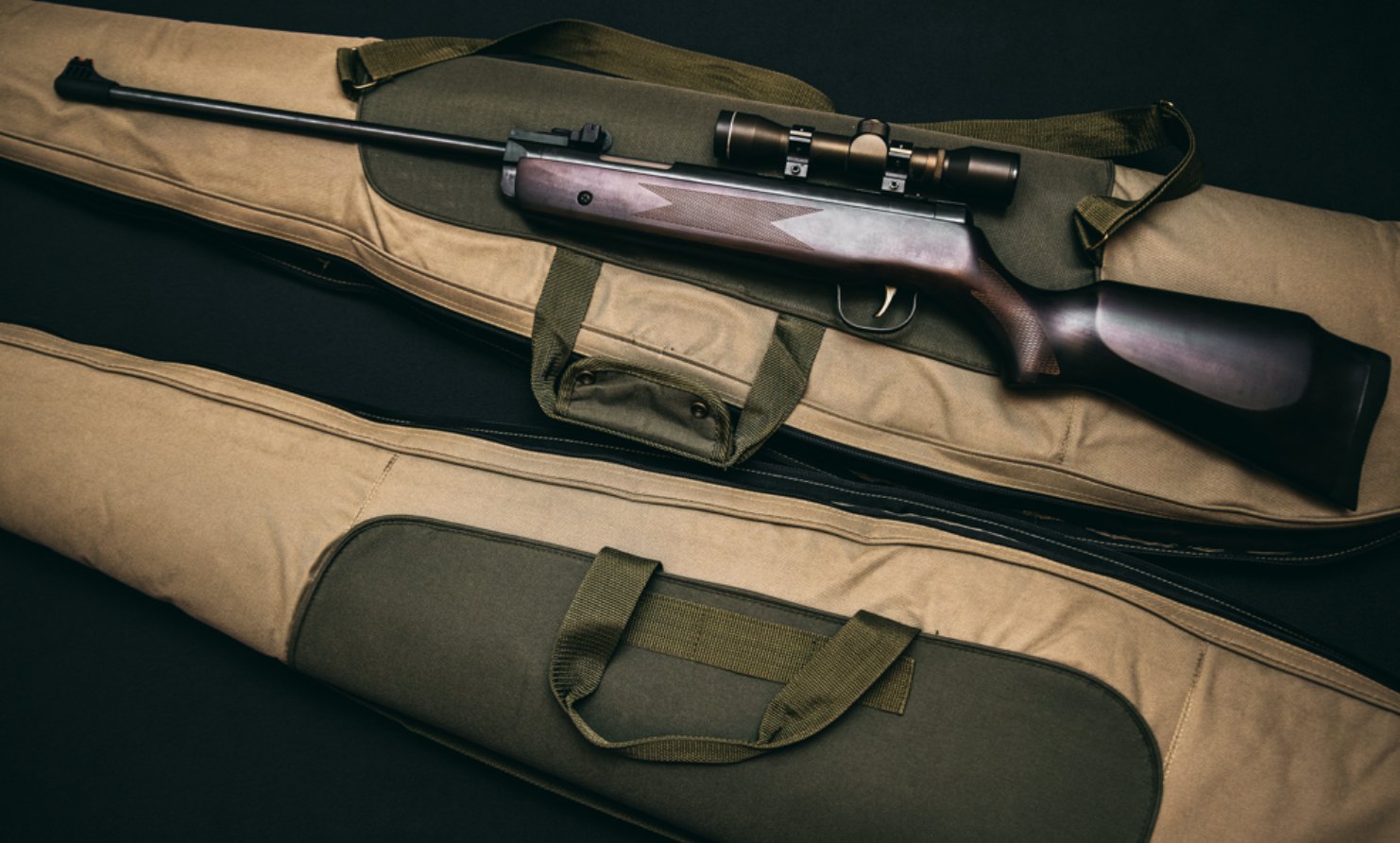Last Saturday, shoppers and workers at a supermarket in a predominantly Black neighbourhood in Buffalo, New York, were targeted by a white gunman wearing body armour and broadcasting the attack on social media. The perpetrator shot a total of 13 people, 11 of whom were Black. The attack is being investigated as a hate crime and an act of domestic terrorism.
The Buffalo mass shooting adds to a sinister string of hate crimes whose frequency rates have soared in the US over the past few years bearing the mark of white supremacist extremism.
Between 13 and 14 May, two other gunmen have carried out attacks suspected to be hate crimes: one opened fire in a church in Southern California, killing one person, and another in a hair salon in Koreatown, Dallas, injuring three women.
What happened in Buffalo?
On Saturday 14 May, 2.30 pm, a white man wearing military gear and live streaming with a helmet camera opened fire with a rifle outside Tops Friendly Market, a grocery store in a predominantly Black neighbourhood in Buffalo, New York.
After shooting four people in the parking lot, killing three, the gunman moved inside. Upon seeing the assailant, security guard Aaron Salter fired multiple shots to stop him, but no bullet penetrated the killer’s armour.
The gunman killed Salter and started stalking through the aisles shooting more victims.
Police arrived to confront the shooter in the store’s vestibule. The gunman trained his rifle to his neck, signalling his intention to kill himself, but police forces talked him into putting his gun down and surrendering.
Later in the day, the perpetrator was brought before a judge who arraigned him on a first-degree murder charge. He pleaded not guilty.
A spokesperson for Twitch, the livestream platform the killer used to broadcast the attack, said they stopped the video less than two minutes after the violence started.
However, portions of the livestream continue to circulate across the internet. Several media reported that at one point of the livestream, the gunman is seen training his weapon at a white person hiding behind a checkout counter, before saying “Sorry!” and moving away, leaving this person unharmed.
The video also seemed to show a racist insult etched upon the surface of the weapon used for the attack.
A law enforcement official anonymously told the Associated Press that investigators are examining a document widely circulated online and attributed to the gunman. It takes the form of a “manifesto” of hate outlining the attacker’s racist, anti-immigrant and antisemitic beliefs.
Attorney General Merrick B. Garland released a statement saying: “The Justice Department is investigating this matter as a hate crime and an act of racially-motivated violent extremism. The Justice Department is committed to conducting a thorough and expeditious investigation into this shooting and to seeking justice for these innocent victims.”
The perpetrator was known to law enforcement for threats against high school
The assailant of the racist massacre was identified as Payton Gendron, an 18-year-old from the small town of Conklin, New York, situated about 200 miles (320 kilometres) southeast of Buffalo.
Officials say it is not clear why Gendron drove all this way to Buffalo, but Buffalo Police Commissioner Joseph A. Gramaglia said that the shooter “was in the Buffalo area at least the day before.”
“It seems that he had come here to scope out the area, to do a little reconnaissance work on the area before he carried out his just evil, sickening act.”
Gendron was already on the radar of law enforcement after he wrote a text threatening to carry out a shooting at Susquehanna Valley High School where he was a student. Aged 17 at the time, he was supposedly placed under “medical” supervision.
New York governor Kathy Hochul said the shooter’s gun, an AR-15, was purchased legally. The high-capacity magazine, however, is not legal in the state of New York and must have been bought somewhere else.
Ten Black people lost their lives
All ten people who were shot dead on 14 May were Black. Many were senior community leaders who had dedicated their lives to bettering the lives of others around them. On Sunday morning, people gathered outside the Tops Market to hold a prayer vigil in memory of the victims.
A prayer vigil this morning outside the Tops grocery store in Buffalo, NY where ten people were killed in a shooting yesterday afternoon: pic.twitter.com/Ts3z2EX2ya
— Nancy Chen (@NancyChenNews) May 15, 2022
- Ruth Whitfield, 86, was on her way home from visiting her husband in a nursing home and stopped by the grocery store to pick up food. Her son, Garnell Whitfield, the former Buffalo Fire Commissioner, said this was her “daily ritual.” He described her as a “mother to the motherless.”
- Aaron Salter Jr., 55, was a retired police officer and the security guard at Tops. Buffalo Police Commissioner Joseph A. Gramaglia praised Salter’s courage in trying to stop the attack, which effecitvely slowed the killer’s progress within the store. Describing Salter as a “true hero,” Gramaglia said: “He went down fighting. He took on a responsibility to protect the customers and the employees in the store. And he did exactly what he signed up for.” One Tops employee, a mother of seven who was present with her 20-year-old daughter, said she and her child could not have escaped had she not seen Salter pull out his weapon. Salter leaves three children behind him.
- Pearl Young, 77, was a “pillar” of her church community and spent the final years of her life teaching children in the Buffalo School District. Her family said: “She loved her students, and they loved her back.” For 25 years she fed people in need in the city’s Central Park neighbourhood.
- Heyward Patterson, 68, a deacon at his church, was one of the first people to be shot on the parking lot. He was a regular known for giving people lifts and helping them carry their groceries. He leaves behind a wife and a daughter.
- Roberta Drury, 32, was a regular at Tops. Her sister Amanda described her as a “vibrant and outgoing” person. She had moved to Buffalo in 2010 to care for her brother Christopher after he received a bone marrow transplant to treat his leukemia. She leaves behind three siblings and her parents.
- Geraldine Talley, 62, would regularly come to Tops grocery store on Saturday afternoons. In her final moments, she sent her fiancé down an aisle to retrieve some items off a shelf. The attack started before they could reunite. Her fiancé survived. Kaye Chapman-Johnson, Talley’s younger sister, said: “She just was an amazing woman. And I’m going to miss her dearly.” She leaves behind two children.
- Celestine Chaney, 65, was a breast cancer survivor with 7 grandkids. According to her son, Wayne Jones, she was visiting her sister.
- Andre Mackniel, 53, was a beloved father, brother, and uncle. According to his brother, he was at Tops supermarket to buy a birthday cake for his son who just turned 3.
- Katherine Massey, 72, was an advocate for civil rights and education in her community. She also wrote for the region’s historic African American newspapers, the Buffalo Challenger and the Buffalo Criterion.
- Margus D. Morrison, 52, was a father to three children.
The three other victims who survived the attack are Zaire Goodman, 20, Jennifer Arrington, 50, and Christopher Braden, 55. Their injuries are non-life-threatening.
Related articles: Gun Violence: How Better Gun Control in the U.S. can Save Black Women | Michigan School Shooting: When Will This End? | Gun Ownership Laws and Policies: Has This Largely Fallen Off the Global Radar?
Soaring rates of hate crime: Racist attacks 32% higher than in 2019
Saturday’s Buffalo shooting adds to grim rates of hate crimes which, according to a report released in Aug. 2021 by the FBI, have soared over the past few years.
The 2020 data counted 5,227 racist attacks in the US, a 32% increase from 2019. Anti-Black or African American hate crimes have increased by 49% since 2019, and anti-Asian crimes by 77%.
In 2021, Impakter also reported on the steep increase in school shootings after a deadly gun massacre hit a school in Michigan, killing three students.
The disastrous spread and worsening of hate crimes across the US are believed to be largely cultivated among extremist online communities.
The “manifesto” posted on social media by Gendron heavily references the noxious “great replacement” theory, which holds that white people are victims of a “genocide” carried out by immigrants and non-white people. It promotes the mass murder of people who are not of European descent as an act of self-defence against this perceived invasion.
An obvious offshoot of Nazi ideology, whereby the Aryan race is entitled to occupy its “vital space” to the detriment of everyone else, the “white replacement” theory has not only gained momentum online but has poured out of the darkest reaches of the internet into the streets.
In the document circulated online, the Buffalo shooter said he drew “inspiration” from the 2019 attack against two mosques in Christchurch, New Zealand, which resulted in the death of 51 people. The assailant claimed to be a white supremacist in a 70-pages-long manifesto also entitled “The great replacement.”
A month after the Christchurch massacre, a similar shooting occurred at a synagogue in San Diego, California, where a 19-year-old killed one person and wounded several others after having poster racist threats on message board 8chan.
Four months after, in August 2019, a 21-year-old white male murdered 21 people at a Walmart in El Paso, Texas, also after he posted on 8chan a message saying the attack was “a response to the Hispanic invasion of Texas.”
This string of events comprises but a handful of parallels one can find to the Buffalo shooting. As the latter massacre is understandably at the heart of media coverage, the occurrence of two other shootings currently investigated as potential hate crimes has been obscured.
One involves the Geneva Presbyterian Church in Laguna Woods, California, where churchgoers managed to detain and hog-tie the gunman after he killed at least one person and wounded three others.
The second involves a hair salon in Dallas, more precisely in the city’s Koreatown. A shooter opened fire in the Asian-owned business and wounded three women.
US President Joe Biden declared on Sunday that racist killings were “abhorrent to the very fabric of this nation.” But the significant and ominous increase in racist mass shootings over the past few years manifests another view of the nation: one where racist and white supremacist ideologies are held to constitute the very foundation of American national identity.
Most concerning is the fact that many elected Republicans and a host of politicians seeking office have sided with the “great replacement theory”, pushing the party yet further to extremist positions. With the Republican party poised to gain in the upcoming mid-term elections, and possibly even regaining control of Congress, this drift towards white supremacy does not augur well for the future. Moreover, this extremist ideology is echoed by media figures with large followings, such as conservative Fox News host Tucker Carlson.
Describing the mass shooter as a “lone wolf” with mental health issues, blaming shootings on the legal status of guns or pointing to social media and message boards are not only insufficient moves in addressing the urgent issue of hate crimes; they participate in masking their actual source: a long, ongoing history of racism, and the rise of right-wing extremism across the world.
It is on this terrain that authorities and citizens must mobilize their strengths so as to anticipate future attacks and hinder the progression of extreme racist violence in the US.
Editor’s Note: The opinions expressed here by Impakter.com columnists are their own, not those of Impakter.com — In the Featured Photo: The Tops supermarket on Jefferson Avenue in the Cold Spring section of Buffalo, New York, as seen on a February 2022 afternoon. Featured Photo Credit: Andre Carrotflower/Wikimedia commons.


